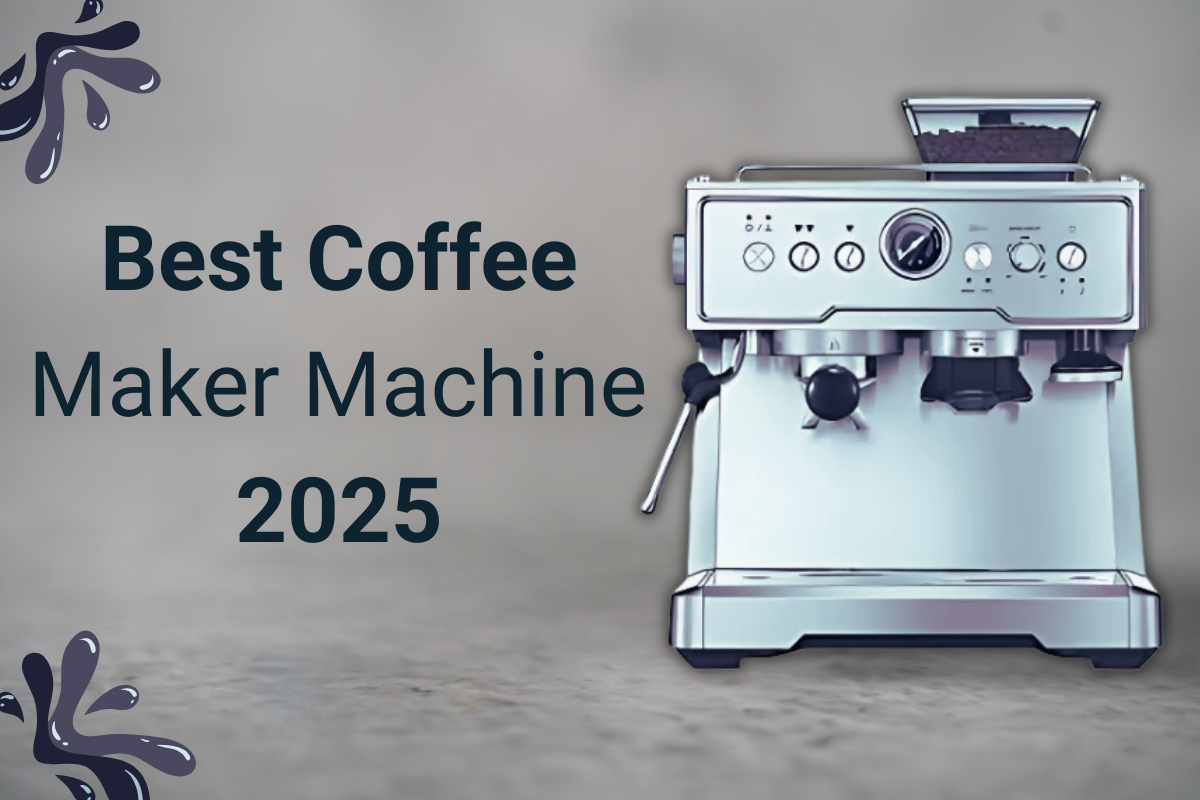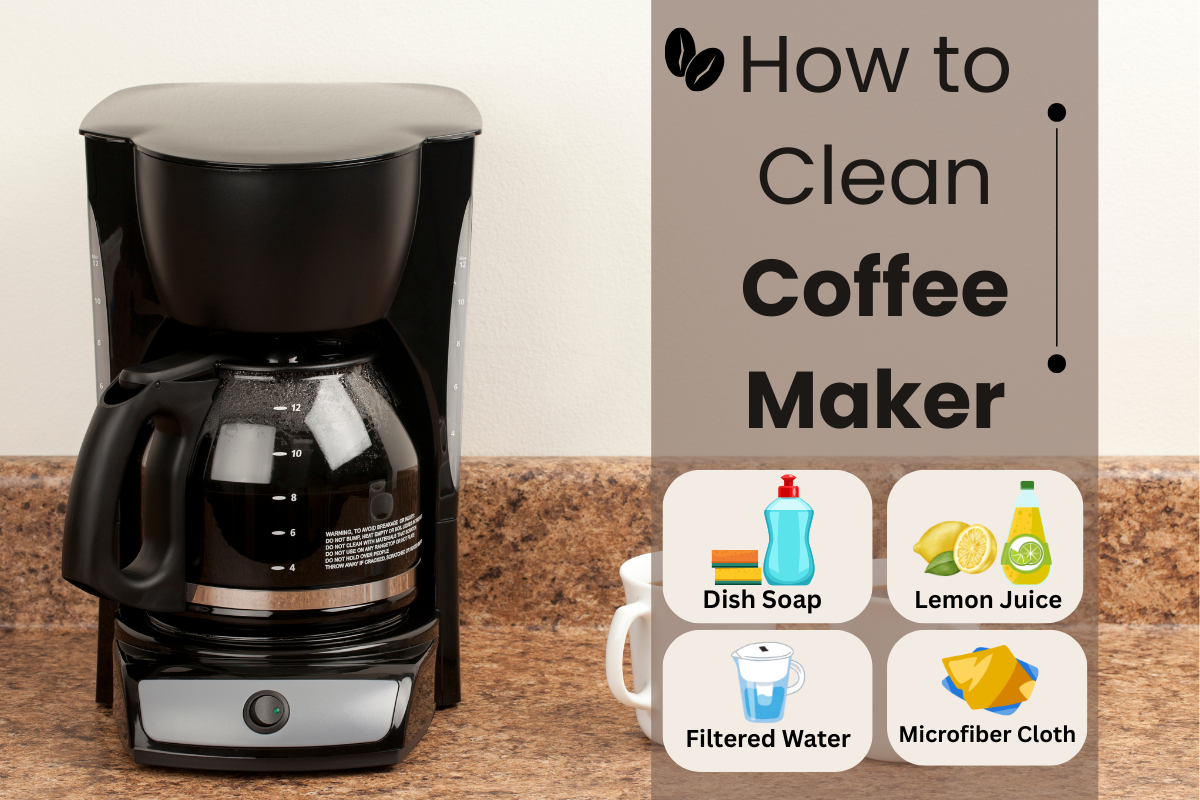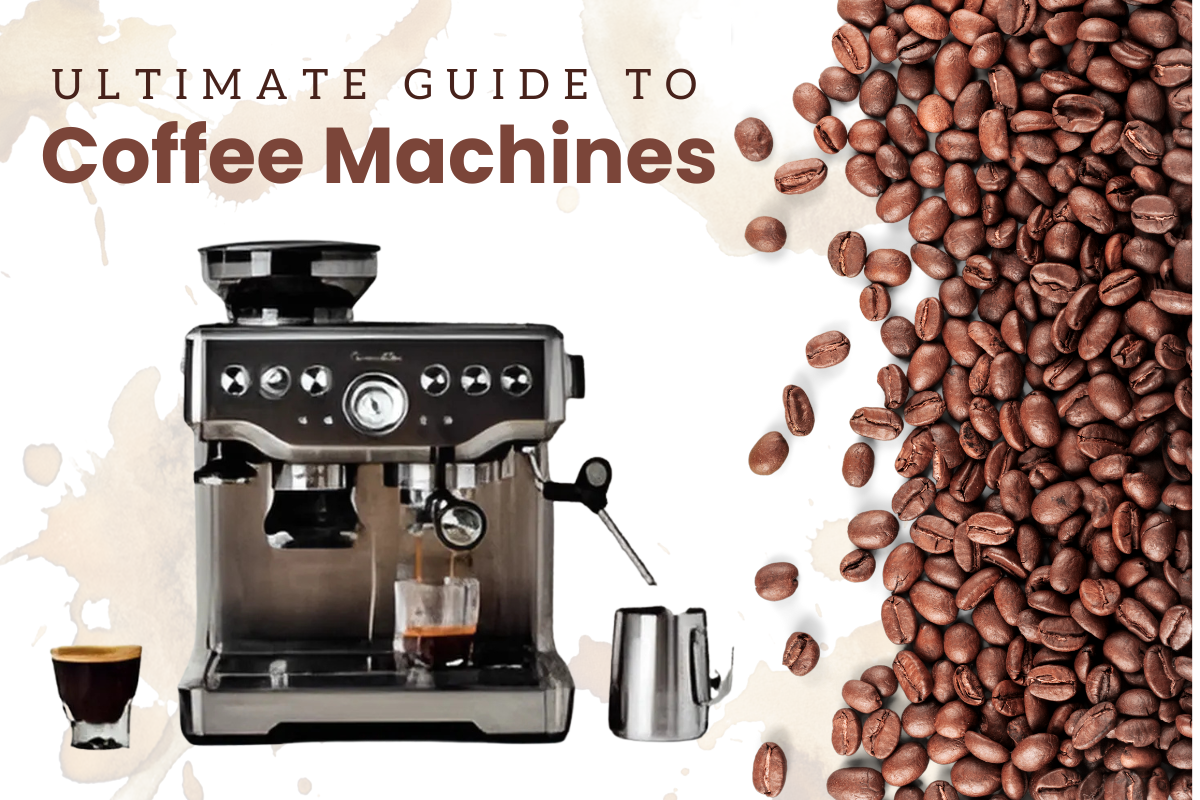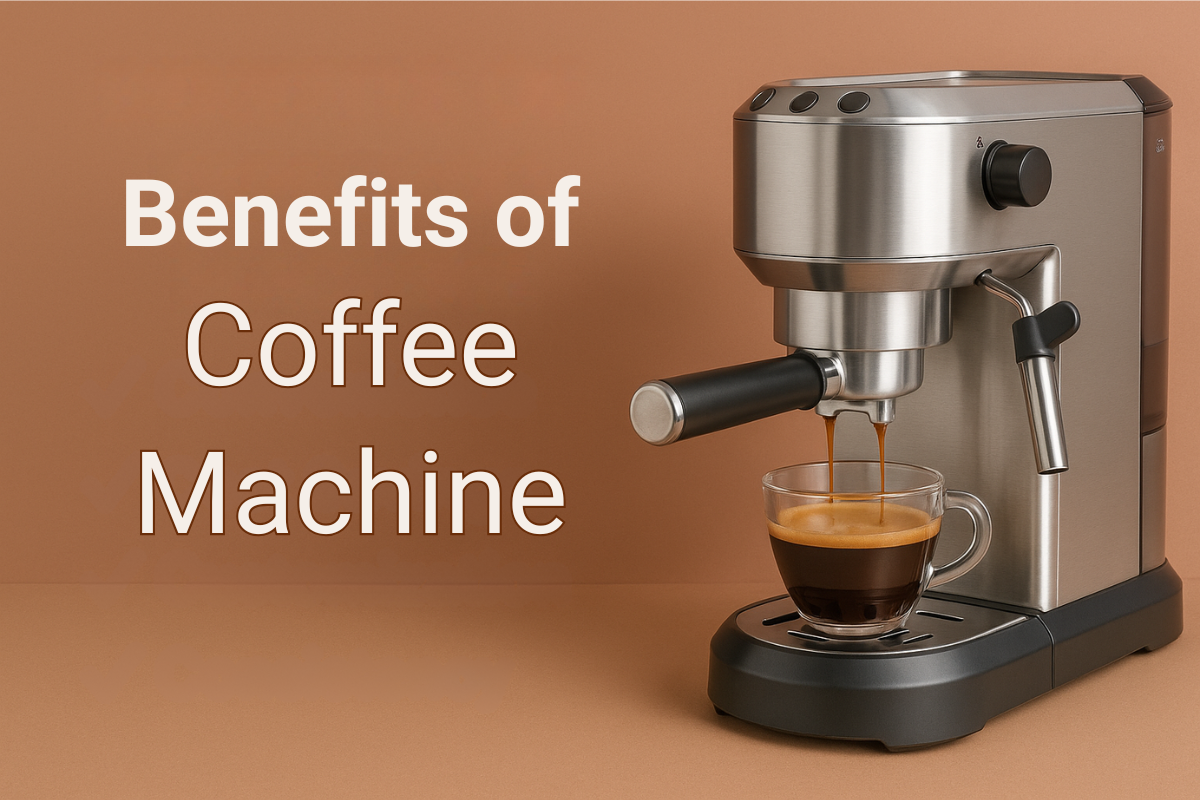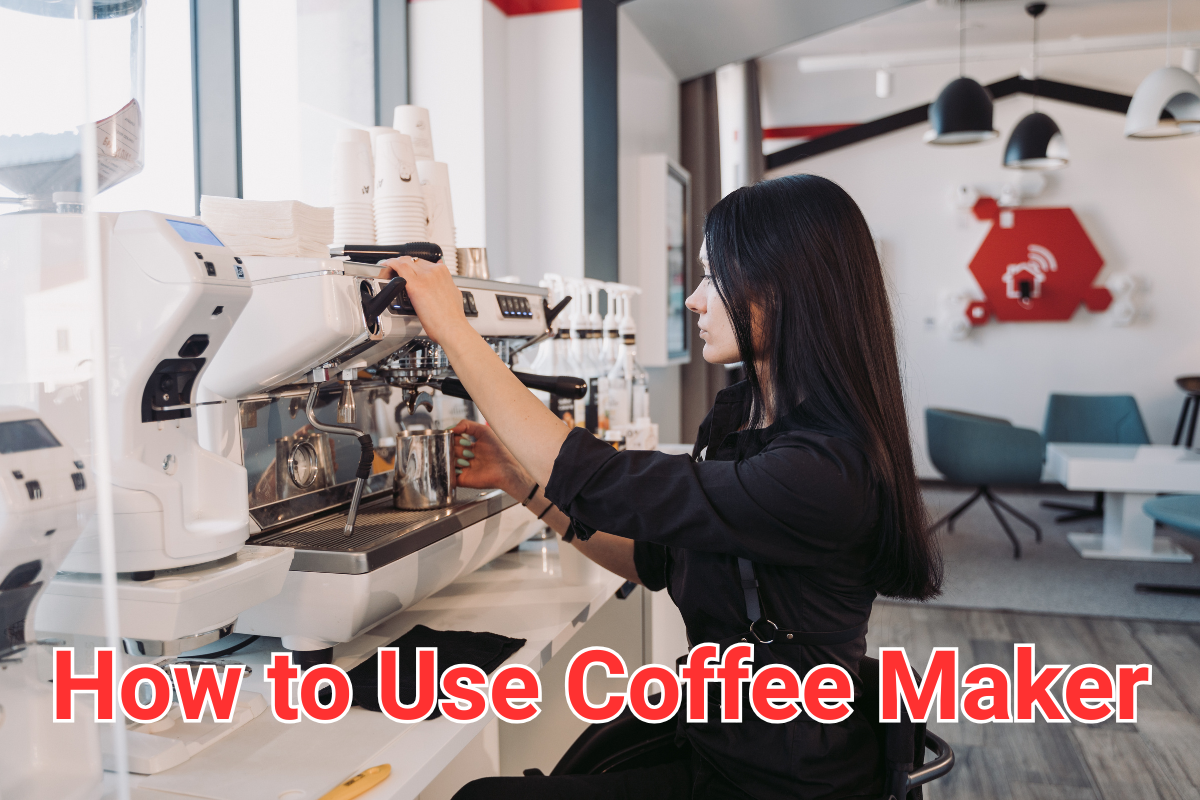Struggling to choose between the manual or semi-automatic coffee machine?
You’re not alone.
More coffee enthusiasts are exploring other options for creating the ideal cup in the convenience of their kitchens, as home coffee preparation has grown in popularity.
If you want to learn more about Coffee Maker, go through our ultimate guide about Coffee Maker.
The Strengths and weaknesses of manual and semi-automatic coffee machine will be discussed in this article, along with practical applications and advice on how to choose the best option for your needs, preferences, and lifestyle.
Understanding the Two Coffee Worlds
Manual Coffee Machine
A manual coffee machine is a kind of coffee maker in which the operator pulls a lever to manually operate every step of the coffee-making process, including creating the pressure needed to extract the shot.
Users must grind coffee beans to the desired consistency, tamp the coffee grounds firmly, and then pull the lever to brew a shot of coffee. Coffee lovers can change the pressure and heat to make the coffee taste just the way they like.
Semi-Automatic Coffee Machine
Semi-automatic coffee machine provide the ideal balance of convenience and control, requiring some manual operation.
These coffee machines use an electric pump to create consistent pressure, but you still control when to start and stop the shot. Because you don’t have to worry about creating pressure by hand, it’s more accessible and yet gives you some control over the flavor and extraction time.
Now, It’s important to learn more about the different types of coffee makers.
Manual or Semi-Automatic Coffee Machine: Key Differences Explained

Suppose you’re trying to decide between a manual or semi-automatic coffee machine. In that case, it comes down to how much control you want, how much time you’re willing to invest, and what kind of coffee experience you’re aiming for.
Control & Precision
- Manual Machines: Offer full control over coffee shot timing, pressure, and volume. Perfect for coffee purists who love experimenting and dialing in every variable by hand.
- Semi-Automatic Machines: Handle pressure and temperature for you, allowing for consistent results with less skill and effort. You control when the shot starts and stops.
Ease of Use
- Manual: Great for those who enjoy the process, but not beginner-friendly. It takes practice and patience to master.
- Semi-Automatic: These are beginner-friendly and designed for users who want to brew great coffee drinks without a steep learning curve.
Consistency
- Manual: The Manual machine requires some skill to operate effectively. In the hands of an expert barista, it can produce rich, nuanced coffee drinks.
- Semi-Automatic: As compared to a manual, it has built-in temperature stability and pre-infusion, delivering more reliable results cup after cup.
Physical Effort
- Manual: Requires manual lever operation throughout the brewing cycle, an immersive but demanding process.
- Semi-Automatic: Automates pressure and flow, saving time and effort, especially useful for daily use.
Maintenance & Durability
- Manual Machines: Fewer electronics mean fewer parts that can fail. Generally easier to maintain and longer-lasting.
- Semi-Automatic Machines: Include more internal components that need periodic maintenance or replacement.
Skill Development
- Manual: Ideal for those who want to grow their barista skills and appreciate the hands-on art of coffee making.
- Semi-Automatic: Great for getting professional-style coffee quickly, with some room to learn and customize.
Price Range
- Manual Machines: Range from affordable entry-level to high-end artisan models.
- Semi-Automatic Machines: Typically start at a slightly higher price point due to electronic components and automation features.
Picking the best coffee machine for home, whether manual or semi-automatic, depends on what you like and how much work you want to do while making coffee. Each type has its own good points, so different people may like different machines.
Final Verdict
Choose a manual coffee machine if you’re a hands-on coffee enthusiast who enjoys full control and craft.
Choose a semi-automatic machine if you want tasty coffee that’s easy to make, gives the same result each time, and is simple to learn.
Advantages & Disadvantages

Manual Espresso Machines
Pros:
- Full Control: You control everything, pressure, time, and water flow, perfect for people who like to make coffee in their own way.
- Craftsmanship: Gives you a fun and active way to make coffee with your own hands.
- Durability: Because it has fewer electric parts, there’s less chance of it breaking.
- Aesthetic Appeal: Many manual machines look old-style and very nice.
Cons:
- Steep Learning Curve: takes patience and effort to perfect.
- Physical Effort: Using a lever can be time-consuming and exhausting.
- Inconsistent Results: Precision is fully up to the user; beginner mistakes are common.
- Slower Workflow: Not ideal for brewing multiple drinks quickly.
Semi-Automatic Machines
Pros:
- Ease of Use: Much easier for beginners to use while maintaining some degree of control.
- Consistent Results: By automating temperature and pressure, human error is decreased.
- Speed: quicker and more effective for everyday use or hosting visitors.
- Versatility: Good for both new and experienced users.
Cons:
- Less Control: The machine controls some parts of the coffee-making process.
- Maintenance: There are more parts to clean and take care of over time.
- Higher Cost: These machines usually cost more than simple manual ones because they have electronic parts inside.
Now, it is important to learn more about the benefits of Coffee Machine.
Best Coffee Machine By Type of User
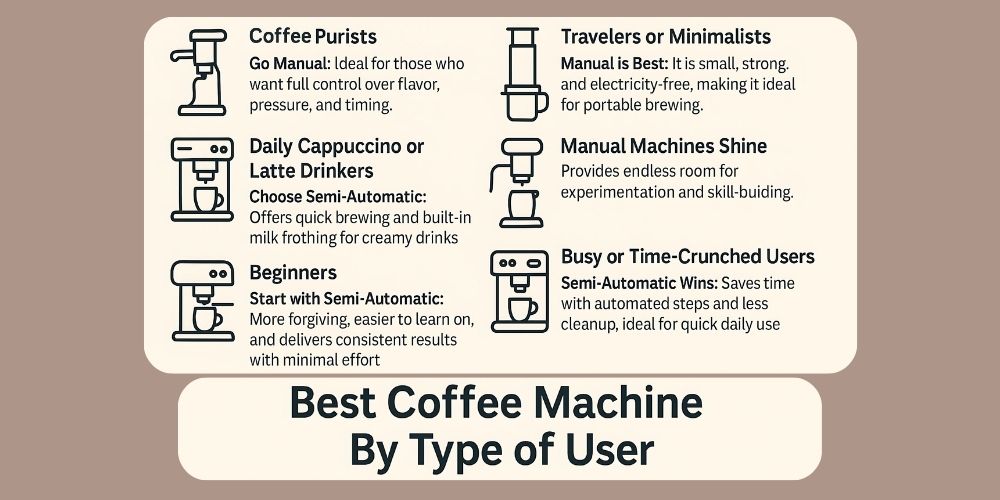
Coffee Purists
- Go Manual: Ideal for those who want full control over flavor, pressure, and timing.
Daily Cappuccino or Latte Drinkers
- Choose Semi-Automatic: Offers quick brewing and built-in milk frothing for creamy drinks on demand.
Beginners
- Start with Semi-Automatic: More forgiving, easier to learn on, and delivers consistent results with minimal effort.
Travelers or Minimalists
- Manual is Best: It is small, strong, and electricity-free, making it ideal for portable brewing.
Tinkerers & Coffee Enthusiasts
- Manual Machines Shine: Provides endless room for experimentation and skill-building.
Busy or Time-Crunched Users
- Semi-Automatic Wins: Saves time with automated steps and less cleanup, ideal for quick daily use.
If you want to know about best coffee maker 2025, you can go through our blog Best Coffee Maker Machine 2025.
Key Features to Compare Manual vs Semi-Automatic Coffee Machine
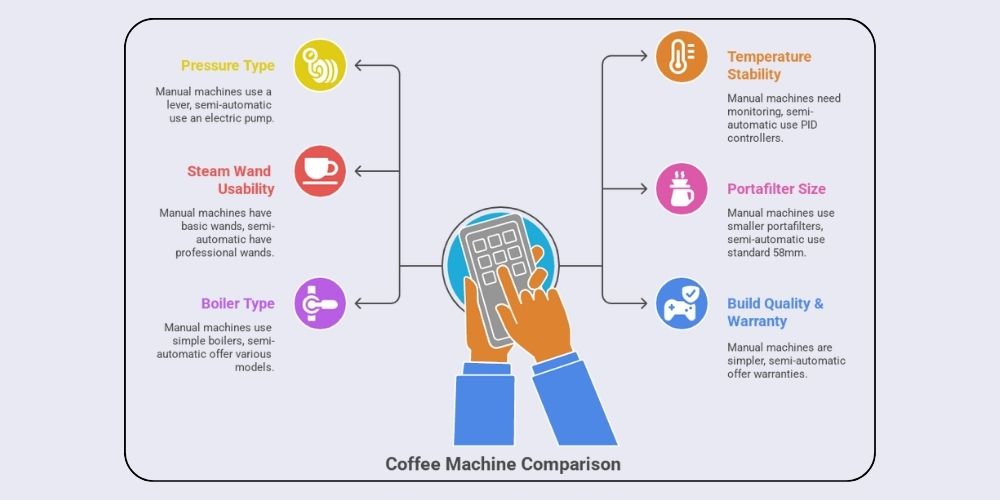
1. Pressure Type
- Manual: Manually creates pressure using a lever. You have complete control, but it takes strength and technique.
- Semi-Automatic: Features an electric pump (usually 9 bars) that automates pressure. Consistent results with less effort.
2. Temperature Stability
- Manual: You may need an external thermometer to monitor brew temp, which can vary during extraction.
- Semi-Automatic: Many come with PID controllers, which precisely regulate temperature for more stable.
3. Steam Wand Usability
- Manual: Often does not include a steam wand, or uses a basic one requiring strong technique.
- Semi-Automatic: Typically features a professional-style wand for frothing milk, making it easier to create lattes or cappuccinos.
4. Portafilter Size
- Manual: May use smaller portafilters (45–51mm), limiting control and shot volume.
- Semi-Automatic: Standard 58mm portafilters offer better heat retention and more consistent extraction.
5. Boiler Type
- Manual: Typically uses a simple single boiler or thermo block; good for low-volume use.
- Semi-Auto: Available in single, heat exchanger, or dual boiler models, allowing you to brew and steam simultaneously.
6. Build Quality & Warranty
- Manual: Fewer electronics mean fewer breakpoints and easier maintenance; often built to last.
- Semi-Auto: More complex, but quality machines come with solid warranties and durable components. Always check for serviceability and support.
Now, it is important to learn more about how to clean your coffee maker.
What Coffee Lovers Are Saying: Manual vs Semi-Automatic
Here are some true stories from coffee lovers that can help you pick between a manual or semi-automatic coffee machine.
“I switched from a Nespresso to a Flair machine, the coffee tasted much better, but it took me weeks to learn how to use it properly.”
– Reddit user, r/espresso
This sums up the manual experience: incredibly rewarding, but expect a learning curve. You’re in control, but you’ll need patience and practice.
“The Gaggia Classic Pro gave me café-level shots without spending $1000+.”
– Home barista review
Semi-automatics like the Gaggia offer a sweet spot—authentic espresso with less of the complexity, making them ideal for daily use.
“Manual machines feel like making art. You have to adjust everything, but when you get it right, the coffee is perfect.”
– Coffee forum member
“I just wanted an easy latte in the morning. I changed to a semi-automatic machine and it was the best choice.”
– r/coffee discussion thread
Final Verdict: Choose the Coffee Machine Which One Suits You

No single coffee machine suits everyone the best choice comes down to your individual taste and brewing method preferences. A lever machine appeals to those who crave full control and enjoy the hands-on learning experience of crafting the best coffee. While semi-automatic and fully automatic machines offer ease of use with features like built-in steam wands for frothing milk. Ultimately, the decision between manual or semi-automatic coffee machine comes down to how much control you want over your coffee brewing process.
If you’re looking for an coffee machine that automates the brewing process while keeping flavor and freshness front and center, a semi-automatic coffee machines allows for an excellent balance.

